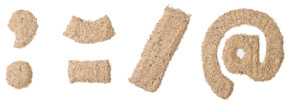Making the Cash Register Ring Through Business Blogging
 “Ask most blog subscribers why they follow a particular blog and you’ll find out that in almost every case they get something out of the blog (whether it be entertainment, advice, research, ideas, etc.),” observes Damon Rouse of problogger.net. That’s why, Rouse says, the first advice he’d give to business bloggers looking to sell through their blog is to be careful not to be purely sales oriented.
“Ask most blog subscribers why they follow a particular blog and you’ll find out that in almost every case they get something out of the blog (whether it be entertainment, advice, research, ideas, etc.),” observes Damon Rouse of problogger.net. That’s why, Rouse says, the first advice he’d give to business bloggers looking to sell through their blog is to be careful not to be purely sales oriented.
It’s not that it’s not OK to sell stuff on your blog, adds blogger Bob Dunn. Selling your readers things they need and want will not send them away. Not, that is, if you make your offers in the right place and the right time, Dunn adds. He offers tips for constructing “the perfect sales offer” on a blog:
- Be authentic, clear and upfront.
- Fold the offer into your post.
- Make the offer easy to find.
- Offer a free tip sheet for readers who click on the contact form.
Heidi Cohen offers more tips on using your blog to sell:
- Include different forms of content, including photos and videos.
- Write about different ways to use your product.
- Make sure your blog site’s navigation makes it easy for readers to buy.
Stock your website with free information that has real value to prospective clients, advises Jim Connolly. What I have found after years of blog content writing is that, if you show how individual bits of information are related in ways readers hadn’t considered, that establishes your expertise and keeps readers’ attention long enough for you to do your “ask”.
The blogosphere, I remember marketing consultant Chris Garret remarking some seven years ago, is slowly coming around to the idea that commerce is not necessarily evil, that in fact businesses need to make money, which they do by selling things.
Is your business blog making the cash register ring?

 I like receiving e-letters from my friend
I like receiving e-letters from my friend  As a blog content writer, I’ve always looked to the old saying that came out of the software industry: “Fast, good or cheap. Pick two.” Known as the
As a blog content writer, I’ve always looked to the old saying that came out of the software industry: “Fast, good or cheap. Pick two.” Known as the  With the Say It For You focus this week on proper grammar and spelling for blog writers, I couldn’t resist mentioning the Oxford comma. The who? you ask.
With the Say It For You focus this week on proper grammar and spelling for blog writers, I couldn’t resist mentioning the Oxford comma. The who? you ask.
Follow us online!